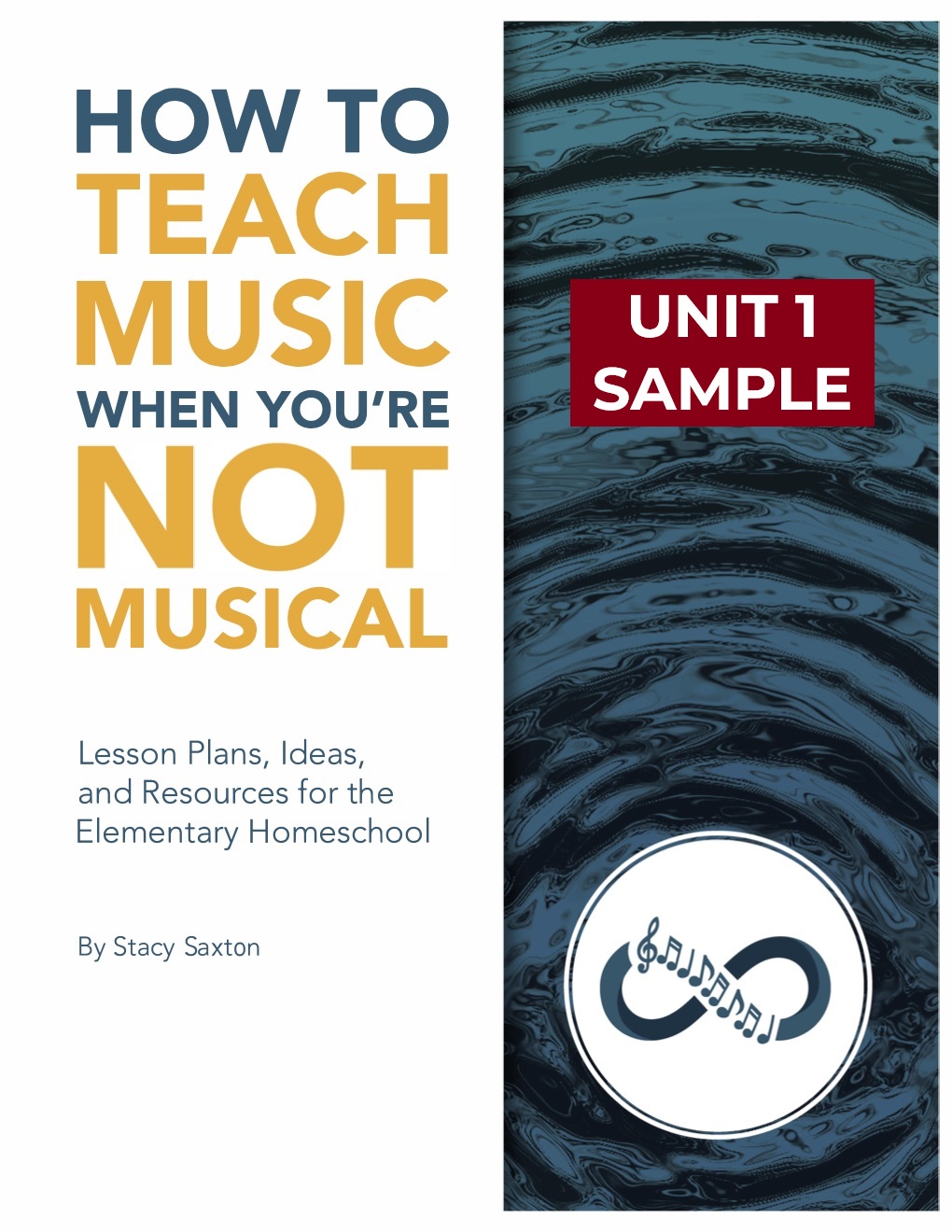How to Teach Music when you’re Not Musical is the ultimate elementary and middle school curriculum for a music education at home.
It has six years’ worth of lessons designed to fit into your homeschool routine, including lessons that can be done in the car, while cooking dinner, or with a movie.
There are no rigid lesson plans or daily requirements. The curriculum is designed to let your children explore and interact with music in an organic way, much like a nature study.
Get yours and discover that a musical education is something that will last your child forever!
Want a deep look at what’s inside?

Unit 1
Sound
In this unit you and your students will use experiments to discover that sound is vibration. That faster vibrations make higher sounds, slower vibrations make lower sounds (pitch). That different materials (glass, wood, metal) create different types of sounds (timbre) and your ear and brain know which sounds come from which materials, and that your ears can tell which direction and how far away a sounds is.
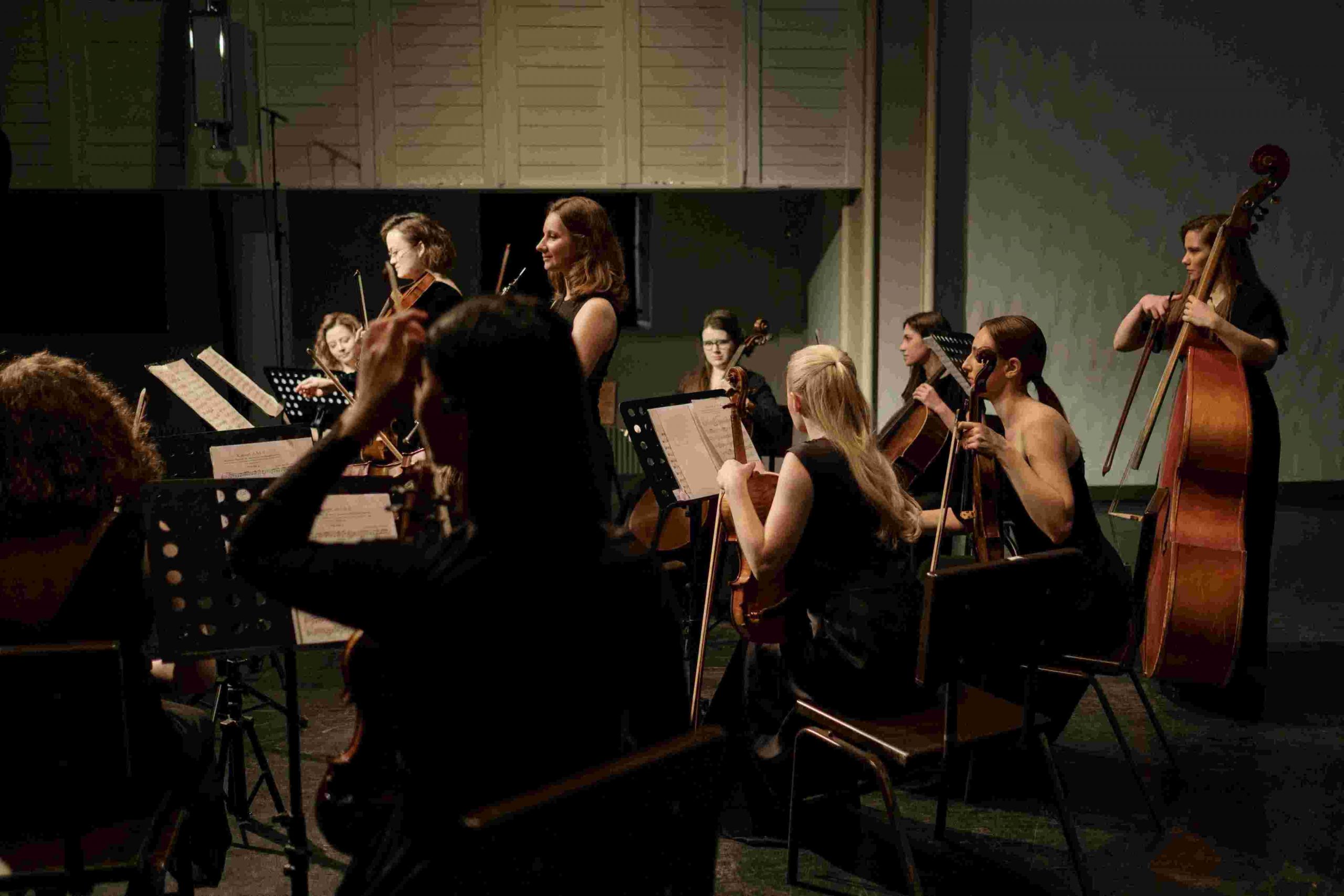
Unit 2
Instruments of the Orchestra
This is the longest unit. Using YouTube videos, recording, and/or hands on experiences, you and your students will learn about the pitch and timbre of each instrument use in the orchestra. Comparing the size and material it is made from with its unique sound. Then learn how the conductor helps them all work together to create art.
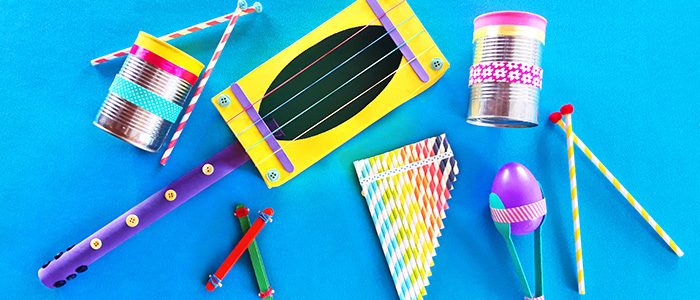
Unit 3
Homemade Instruments
This unit contains directions for making many simple, fun instruments. Enjoy being creative and experimenting with materials. Whether or not the instruments actually sound good, you can make them beautiful and enjoy laughter and togetherness while making them.
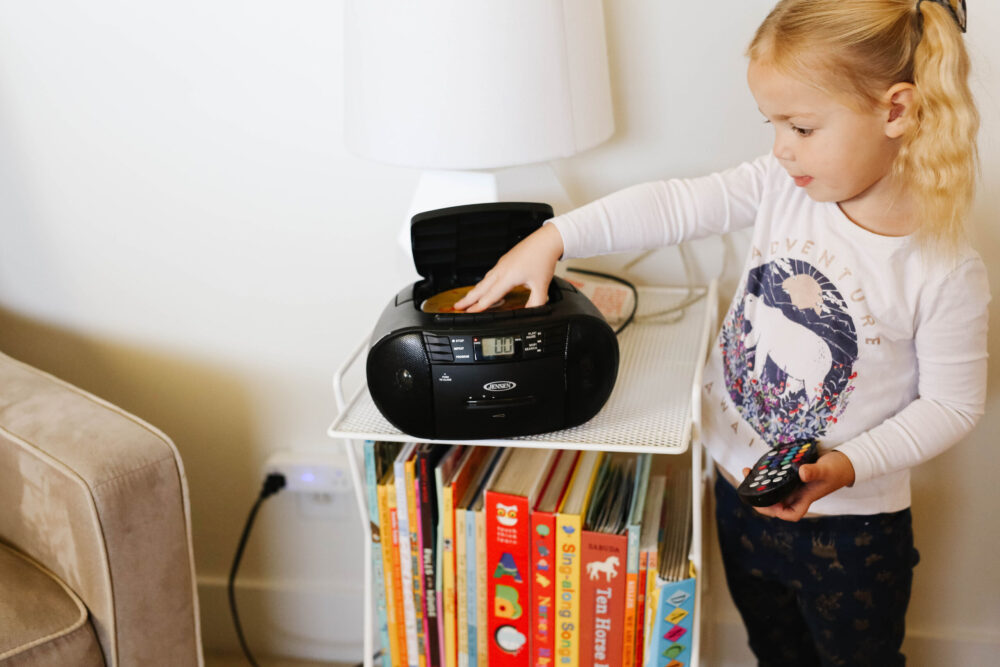
Units 4 & 5
CD and DVD Listening Lessons
Now that you’ve learned the unique sound of each instrument, enjoy listening to LOTS of music of all varieties – classical to country, folk to foreign. But don’t just listen (passively). Create pictures in your mind, move with the music, discuss with each other what you did and did not like, and suggestions and discussion questions are given to guide you on your listening journey.
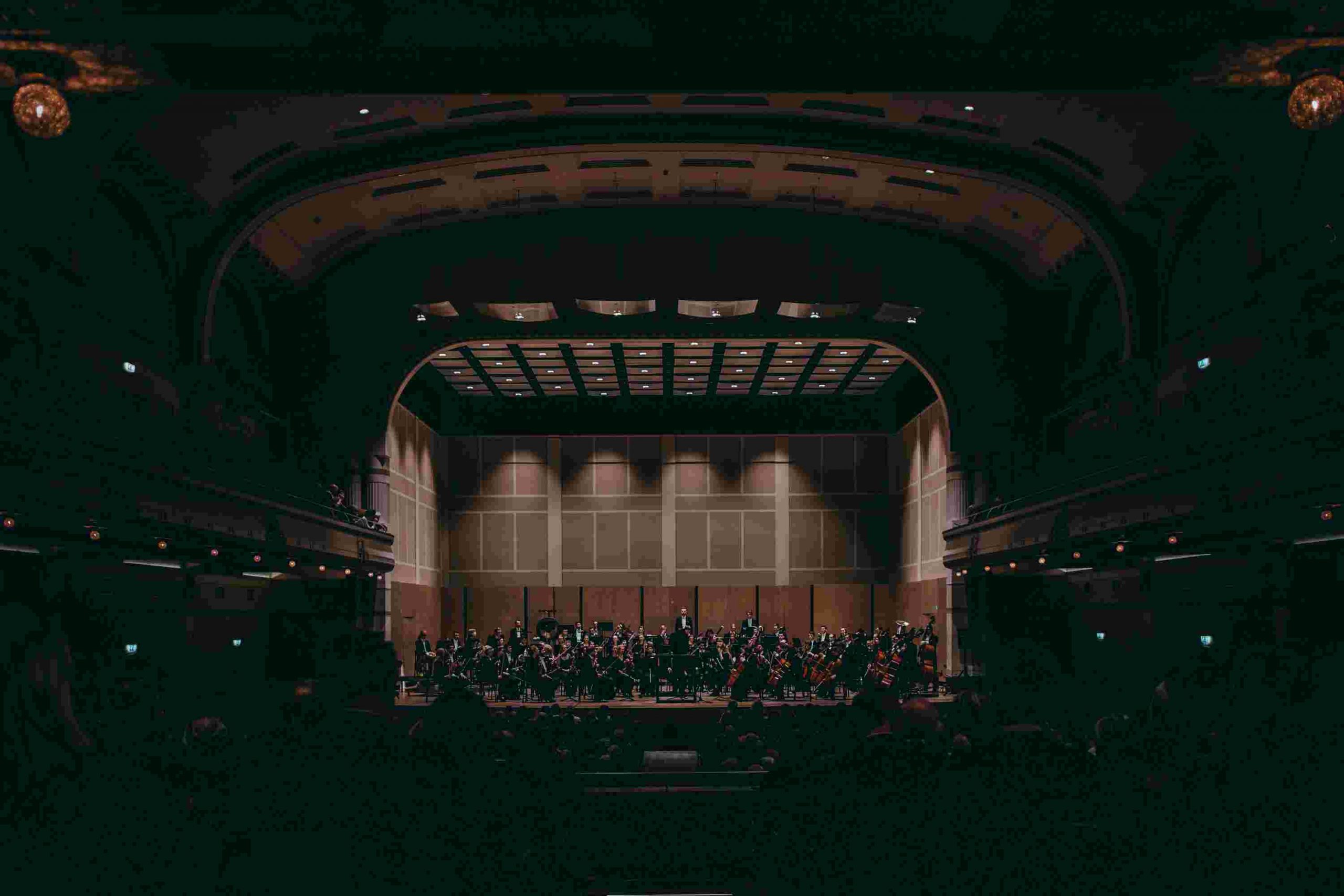
Unit 6
Attend a Performance
Opportunities and options abound to see a musical performance. This unit will give you ideas and help you prepare your students for the experience.
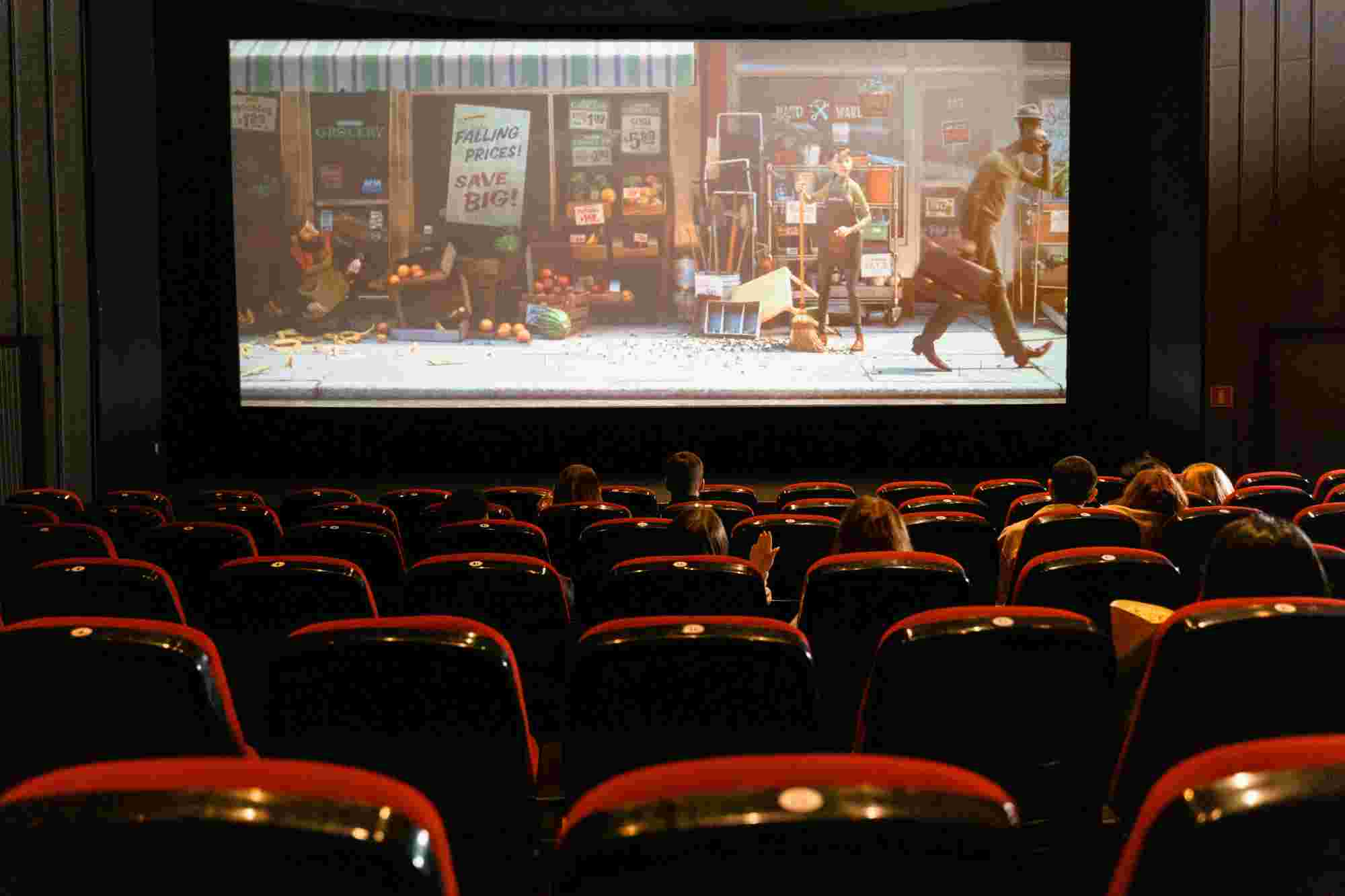
Unit 7
Music In Movies
A brief history of motion pictures is discussed in this unit as well as the various stages of adding music to the movie. Then the purposes music fills are discussed and examples given to watch. (Watching movies for school? Yes, please!)
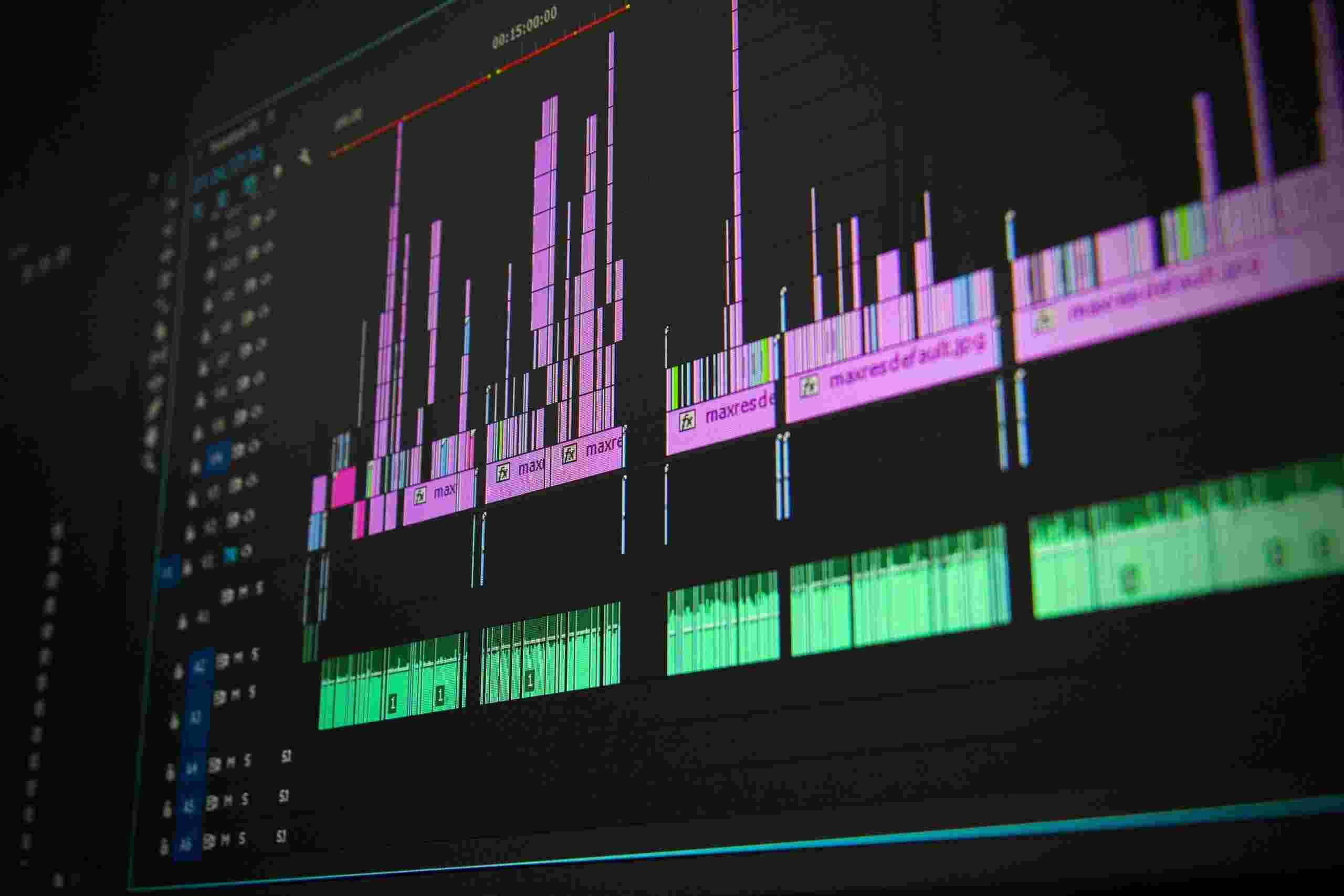
Unit 8
Music in Video Games
Like movie music changing through stages from silent to fully orchestrated and synchronized, so video game music has morphed tremendously, from simple computer generated sound effects to fully orchestrated, studio recorded musicians.
BONUS challenge – Can you use your homemade instruments from Unit 3 to create sound effects and music for a video game of your own invention?

Unit 9
Other Instruments
This is where you’ll learn about instruments that are not in the orchestra but are still very popular – the piano, the guitar, bagpipes, and many others.
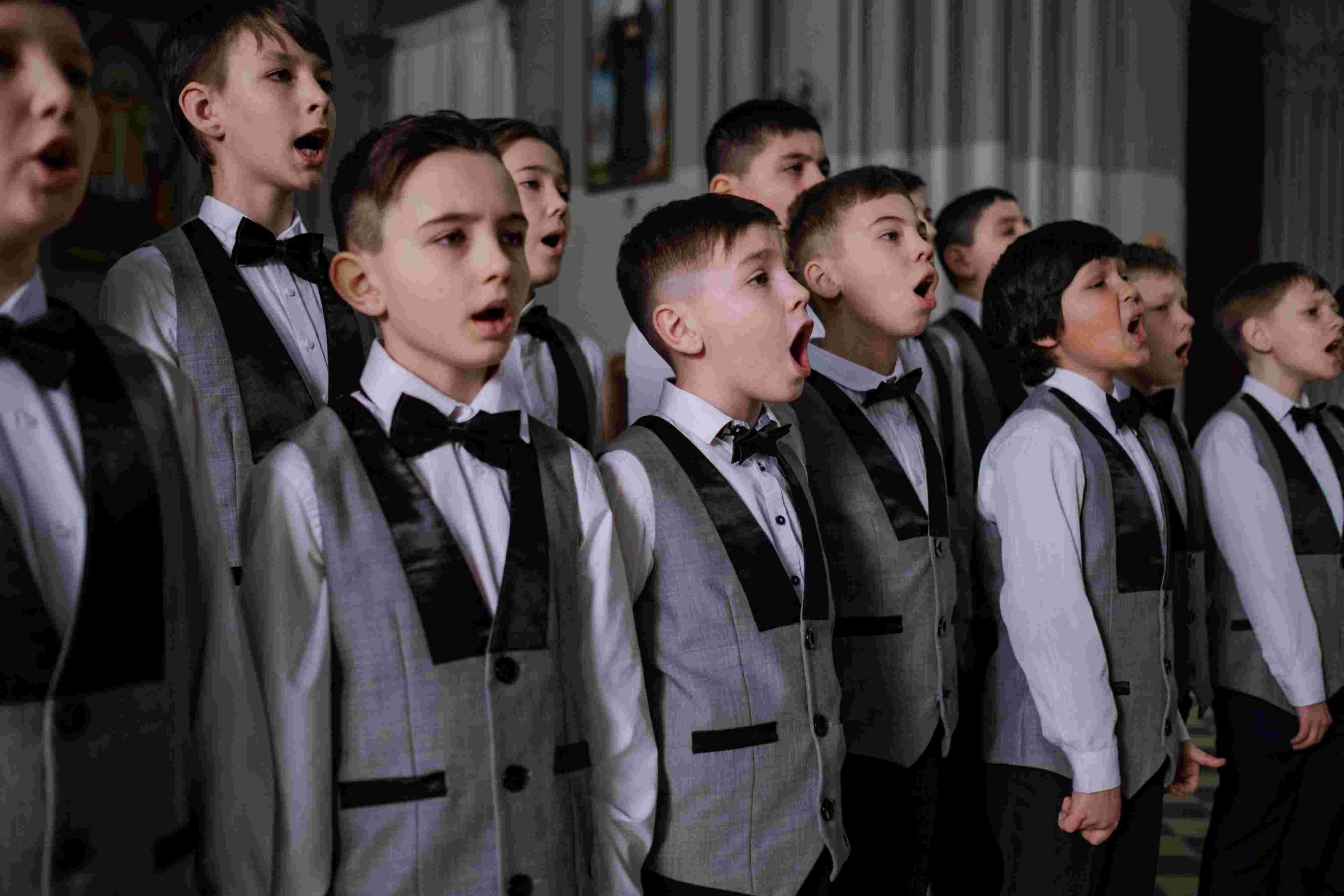
Unit 10
Vocal Music
Your voice – the instrument that is always with you. It can be used alone in the shower or with others in a small or large group. But it must be cared for and protected like other instruments.
